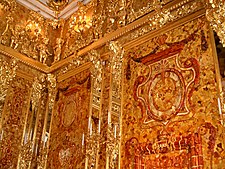|
Contact the seller in advance before paying for the order! Amber – Prehistoric Gold And A Feast For PaleontologistsHistory: It was one of the first materials humans used for jewelry, some 30 000 years ago. People began trading with it and make objects from it some 11 000 years ago. Around 2500 BC Mediterranean countries used it in trade, and objects from that period have been found as far away as 600 miles from its origin. Its ability to attract electricity was early seen as magical and the word electricity actually is derived from the Greek name for Amber – Electrum. The gem was highly priced by the Romans and Emperor Nero acquired so much of it that he covered the entire stage for the gladiator fights with it. He even priced it higher than human slaves. In the dark middle ages, the Knight crusaders strictly controlled the use of Amber. They forbade people to own it, and brutally punished the ones that did. They used it solemnly for religious artifacts and rosaries. But what on earth is Amber?
Not all fossilized resin contains inclusions like insects, spiders and such, but the inclusions raise the price and value of the resin substantially compared to those without it. It looks like the area in which it was created have something to say about the amount of amber with inclusions. Fossilized resin from the Dominican Republic contain substantially more inclusions than the Baltic one. The first resin producing plants were fern trees. They grew in Devonian time when the first insects also first appeared. The oldest insect inclusion found is from the Cretaceous time, which is the dinosaurs golden period. Fossilized resin is most known for its yellow-brown to golden color, but since it refracts many frequencies of light, some are red, green and even blue. Although found around the globe, fossilized resin is mainly found in two locations, Baltic and The Dominican Republic. Fossilized resin from the Baltic's is considered beautiful and extraordinary, but lots of it is enhanced to improve it's beauty. Different methods are used like: - Heating. Used to discoed fractures or to produce sun spangles like flints or scales. - Roasted with oxygen to change surface color. - Boiling oil is used to clarify a clouded gem and remove small gas bubbles. - A vacuum gas chamber/autoclave treatment or furnace heated with nitrogen or argon. - Some cabochons have a painted back to give a certain color, like green or blue. These methods are not done to fool people, but are a standard accepted way to enhance the quality of the gem, like with other gemstones. Fossilized resin is actually considered to be a gemstone, although it is of botanic origin and not a mineral.
The not so accepted methods are when small pieces of fossilized resin are melted together under high pressure and embedded in plastic. When pressed the gem is very even in color, something real fossilized resin directly from the mines are not. There is nothing wrong with this method in general, as long as you are told what you are buying. Sadly many of these pressure created gems are sold as genuine Amber. And in a wide perspective that is what they are, but the value is not present like with a genuine one of size. Fossilized resin from the Baltic is also referred to as Succinite, because of its high content of succinico acid. Fossilized resin from the Baltic's are mostly yellow, orange-tawny, red-tawny and rarely yellow green. Dominican Amber: Mining Dominican fossilized resin is done through bell pitting, which is extremely dangerous, and few or no safety measures are taken for the workers. The mining has only been done for the last 50 years, due to the islands troublesome history. The fossilized resin have been there always of course, but mining it have not been a priority earlier. When the mining started, most of the gems were exported to Germany and was worked there. But eventually the Dominican republic forbade the export of the gem unless it had been partially worked in the republic. They also have strict regulations on exporting gems with inclusions, and exports have to be approved of the National Museum of Natural History. This have limited the supply of fossilized resin with inclusions and raised the value on the pieces already on the market. The Amber from the Dominican Republic is mostly honey colored, but red and green are found in smaller amounts. And a rare blue which is only found in these mines. The rare blue gem both is and is not blue. It is fluorescent and becomes cobalt blue under UV light, due to the present of poly-nuclear aromatic molecules. It does not look blue if the light passes through it, but when it hits the surface. So, if you put a piece of blue amber on a white sheet of paper, the white surface will refract the light through the amber and it will look yellowish. If you put the same gem onto a black paper, the light will not be refracted by the black background but by the surface of the gem, and it will appear blue. This phenomena is only present in the Dominican blue amber and not in blue amber form other places.
Fossilized resin from the Dominican Republic is not enhanced or treated in any way. It is only cut and polished as it came out of the mines. The smallest pieces is disposed of and not pressed like the Baltic's. It is therefor not industrialized but “hand made”. This, and that it is mined in small quantities plus more inclusions have made the Dominican Amber more priced than the Baltic's. What you get is 100% real fossilized resin. Fake Amber: False inclusions can be made by cutting off a slice of real Amber and drill a hole in it. A bug is inserted, the hole is filled with resin and the slice is glued back on with resin. The result is a bug in fossilized resin that passes all the tests known as the real thing. These fakes are sold for thousands of dollars on the market, simply because it is so hard to see that they are manipulated. Well, the bug can probably blow the cover, but only if you know where it belongs in the evolution, and most of us don't. Another fake is called Caribbean Amber. This is artificial colored Colombian copal, that is not even from the Caribbean, but from south America. In the first half of the 20th century Lucite was a popular material to make imitation Amber. At a fairly reasonable price back them, these fakes are sold as colectible items today for quite high prices.
Now, it is not easy to perform these tests for just everybody. I don't know what a dealer would say if you used needles, acetone and knifes on his samples or carried with you UV light. However I guess this applies mostly if you are going to buy real valuable Amber for high prices. But it is OK to know that fakes are frequent. Some telltale signs you can see, like if a gem is too even in color, too clear. Also if a strand have equal looking beads. Nature is not 100% perfect. Anomalies are almost always present, and they are not always easy to fake. If you buy a piece with an inclusion, it should be the only one existing. If there are two or more identical, they are most certainly fake. What decides the value?
|
Loans for US Residents:
Choose what you need:


Would you like to add your tutorial to this site?
It is very velcome.
The Art Of Resin Jewelry


Promote Your Page Too






